John Hurrell – 15 October, 2010
It will be interesting to see where Rae goes from here, if she moves towards the more social thematic content implied in her last solo show at Jensen, or stays ensconced within the tradition of Vermeer, Chardin and Morandi. For this former director of South Island Art Projects (an early ninties precursor of The Physics Room) this current show could be interpreted as backtracking - a bit of a retreat.
A Baker’s Dozen still lifes are presented by Jude Rae here at Jensen’s - nine oils (eight in gallery, one in office) and four watercolours. The oils demonstrate the artist’s skill at rendering the effects of light when it rakes across ceramic objects on a shelf, or passes through blue plastic bottles of drinking water. She blends a Morandilike obsession with lined up chinaware and subtle spatial projection, with the softly muted colour control of Chardin - especially his interest in light’s behavior on solid forms.
The more intimate smaller paintings of angularly planed chinaware work best. There are a number of reasons.
Firstly their warm tones (with no icey plastic or watery blue) enhance the Chardinesque ambience, and the use of fewer, often lower, objects concentrate the viewer’s gaze. The humbleness of the functional items gets accentuated this way, and the scanning spread of the gaze strictly limited: not too high, not too wide.
These more modest works are more direct. Both types have a subtle depiction of reflection, especially in that of the bench’s top plane. Rae also uses a red undercoat that besides providing a chromatic warmth helps delineate a thin horizontal line that could be the undercoat of the rendered shelf, or the undercoat of the painting you are looking at.
In comparison with the simpler compositions the larger works draw out Rae’s occasional technical weaknesses, such as the slightly wonky necks on the thin dark cylinderlike bottles. The joined vertical tubes should be perfectly aligned, but such inadequacies aren’t obvious because of the distracting complexities of arrangements which are also ambiguous in their interpretative possibilities. The overlapping, various shaped forms are relatively complex and could almost be a crowd of differently proportioned people standing on a street, or the blue-bottled water a section of window with outside sky.
It will be interesting to see where Rae goes from here, if she moves towards the more social thematic content implied in her last solo show at Jensen, or stays ensconced within the tradition of Vermeer, Chardin and Morandi. For this former director of South Island Art Projects (an early ninties precursor of The Physics Room) this current show could be interpreted as backtracking - a bit of a retreat.
John Hurrell
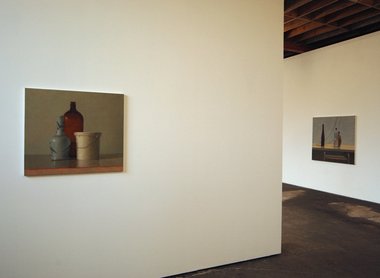
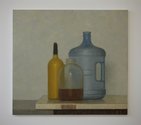
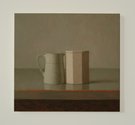
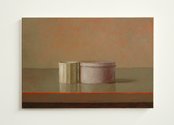
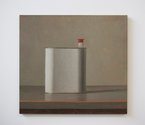
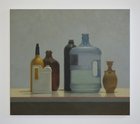
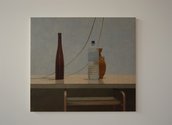
 Two Rooms presents a program of residencies and projects
Two Rooms presents a program of residencies and projects Advertising in this column
Advertising in this column



This Discussion has 0 comments.
Comment
Participate
Register to Participate.
Sign in
Sign in to an existing account.